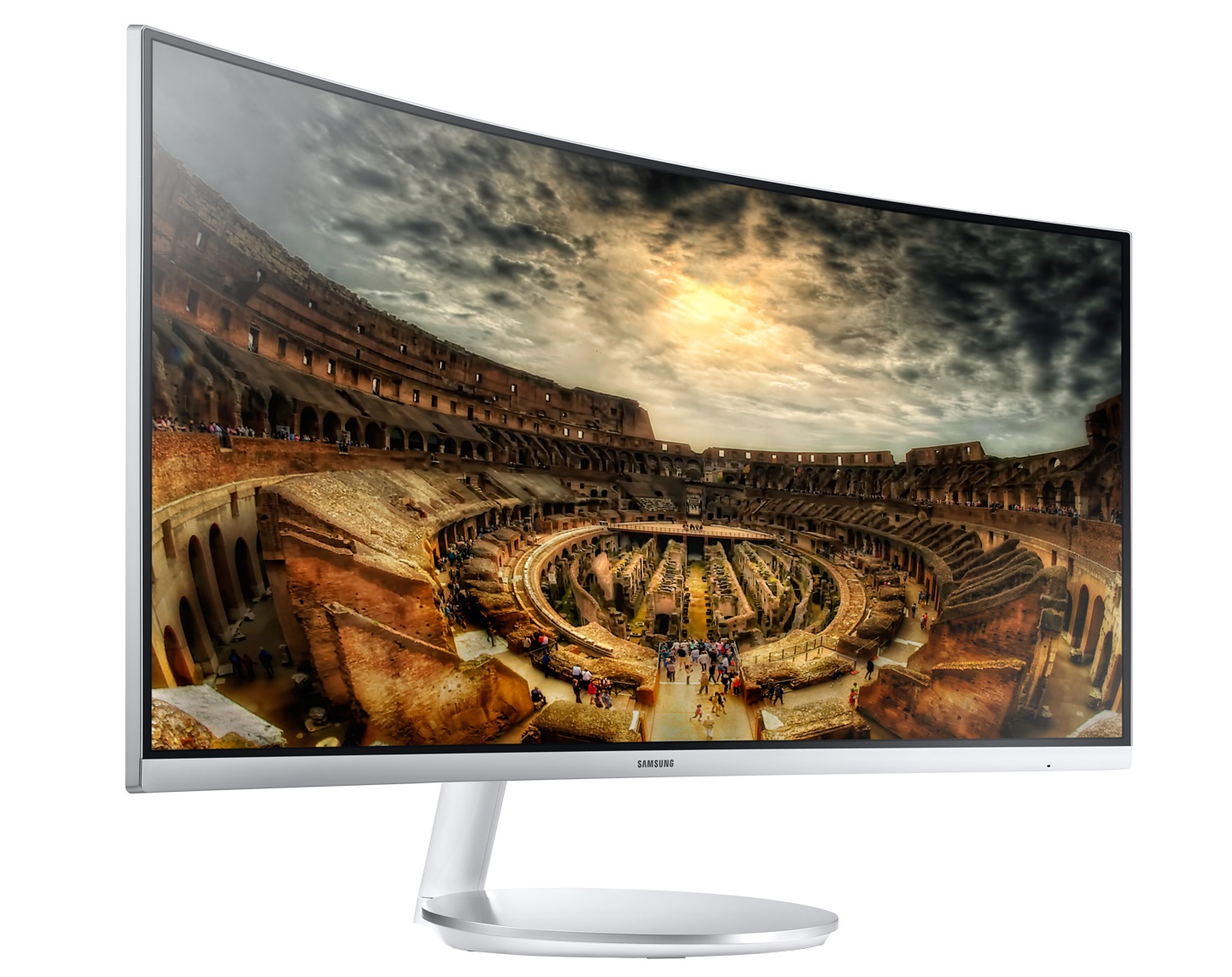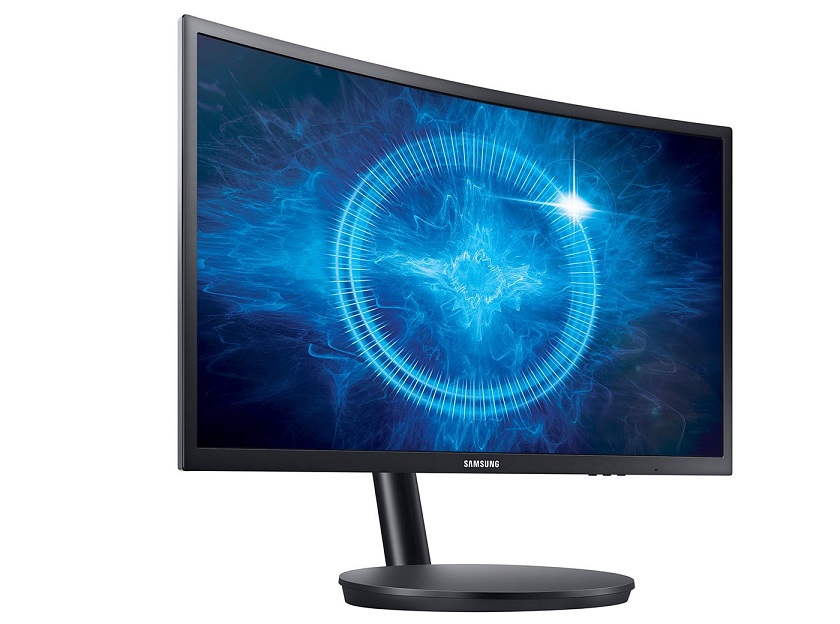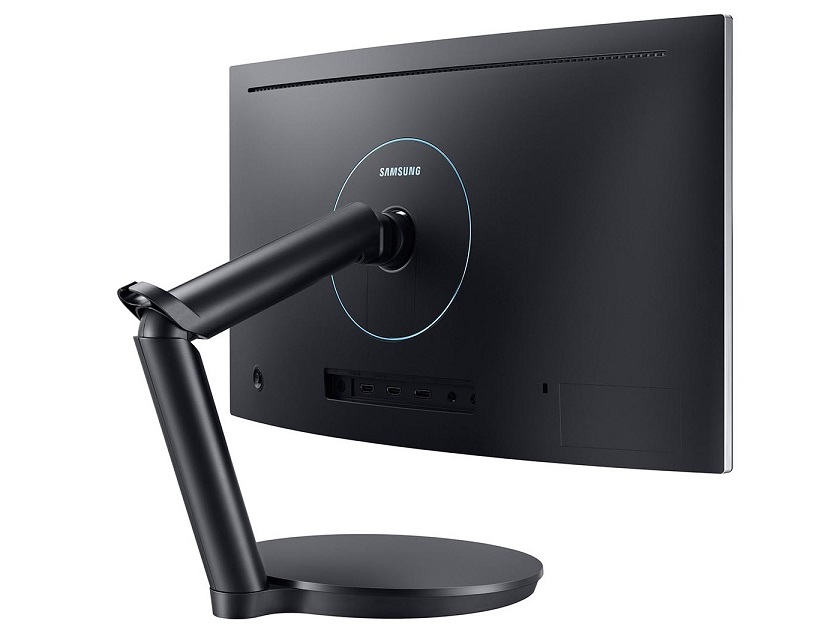O site da Asus é mais markting, a minha ideia em postar o video é pq se ve bem a diferença entre 60Hz e os >=120Hz. É sempre dificil para quem só tem 60Hz como eu ter uma ideia real do que se ganha. Os 120 vs 180 tb seria interessante ver. O baixo input lag, que nao dá para ver no video, tb faz muita diferença nos jogos.
You are using an out of date browser. It may not display this or other websites correctly.
You should upgrade or use an alternative browser.
You should upgrade or use an alternative browser.
Periférico Novidades de monitores High Refresh Rate/FreeSync/Gsync
- Autor do tópico RSC
- Data Início
smartdroid
Power Member
Se o CS GO é assim a 60HZ eu vou ali e venho já...até fico mal disposto de olhar para essa trafulhada.
smartdroid
Power Member
Jogo esse joguito desde 2012 com o meu monitor 144hz sempre trancado nas 300fps da mesma forma que jogo num monitor de 60hz óbvio que existe diferença mas esse video é marketing para tótós...
Miguel_Pereira
Power Member
Penso que seja a melhor forma de demonstrar, mas duvido wue o ecrã de baixo esteja efectivamente a 60hz, o jogo não está a correr de forma tão lenta como isso.
Deve estar a uns 15 ou no máximo 30, diria eu.
Deve estar a uns 15 ou no máximo 30, diria eu.
Encontrei este para comparação, parece-me equivalente ao video anterior so que 144 vs 60:
EDIT:
Filmando o jogo que está a 60 FPS e fazendo playback em slowmo (1/2 velocidade) temos 30 FPS, 1/4 temos 15FPS, por isso que o efeito visual do slowmo é esse que descreves, enquanto para 180 FPS temos 90FPS e 45FPS respectivamente, por isso nao se nota os saltos.
Tem de se ter em conta que o video esta em slowmotion para demonstrar a diferença de fluidez (exagerando o efeito como diz no texto da Asus) e não na velocidade real.
Não podem comparar na velocidade real, pq quem tem 60Hz nao pode ver mais que 60FPS.
EDIT:
Para que não fique duvida, já tive um 144hz e a diferença de 60Hz para 144Hz, não tem nada a ver com o que se ve no video, a questão nem se coloca nunca poderia ser assim, na realidade ve-se apenas bastante mais fluido, que é o resultado em velocidade real do que podemos observar em slowmotion.
EDIT:
Filmando o jogo que está a 60 FPS e fazendo playback em slowmo (1/2 velocidade) temos 30 FPS, 1/4 temos 15FPS, por isso que o efeito visual do slowmo é esse que descreves, enquanto para 180 FPS temos 90FPS e 45FPS respectivamente, por isso nao se nota os saltos.
Tem de se ter em conta que o video esta em slowmotion para demonstrar a diferença de fluidez (exagerando o efeito como diz no texto da Asus) e não na velocidade real.
Não podem comparar na velocidade real, pq quem tem 60Hz nao pode ver mais que 60FPS.
EDIT:
Para que não fique duvida, já tive um 144hz e a diferença de 60Hz para 144Hz, não tem nada a ver com o que se ve no video, a questão nem se coloca nunca poderia ser assim, na realidade ve-se apenas bastante mais fluido, que é o resultado em velocidade real do que podemos observar em slowmotion.
Última edição:
High Refresh Rate Panels and Displays: A Road-map and Round-up
http://www.tftcentral.co.uk/articles/high_refresh_rate.htm
http://www.tftcentral.co.uk/articles/high_refresh_rate.htm
miguelbazil
Ninja
Ena, bom artigo da tft. Mas lá está, mostra bem o quão limitado e "difícil" ainda é produzir um painel IPS para 144Hz, provavelmente devido aos artefactos que devem emergir. Os que funcionam são óptimos, mas não deve ser fácil. Ainda assim, bom ver que a LG já está a apostar fortemente nos ultrawide, pelo menos para mim que sou fã do formato, está a ser uma boa introdução no mercado.
Felizmente nos ultimos anos a oferta deste tipo de monitores evoluiu, temos outros paineis alem do TN, temos gsync/freesync, agora só faltava os preços serem mais convidativos 
Os novos modelos TN já baixaram um pouco, o PG248Q (gsync) anda nos 430 eur, o MG248Q (freesync) nos 310eur.
Depois há um grande salto no preço para os 27" IPS, que infelizmente poe estes IPS fora do meu orçamento.
O MG248Q parece-me uma boa compra se nao fosse o bug que tem com o freesync (espero que a Asus resolva isso).
Por agora ando interessado no PG248Q (gtx 970), a que preço acham que seria uma boa compra?
EDIT:
A tftcentral tb tem uma BD com specs de varios paineis:
http://www.tftcentral.co.uk/articles/monitor_panel_parts.htm

Os novos modelos TN já baixaram um pouco, o PG248Q (gsync) anda nos 430 eur, o MG248Q (freesync) nos 310eur.
Depois há um grande salto no preço para os 27" IPS, que infelizmente poe estes IPS fora do meu orçamento.
O MG248Q parece-me uma boa compra se nao fosse o bug que tem com o freesync (espero que a Asus resolva isso).
Por agora ando interessado no PG248Q (gtx 970), a que preço acham que seria uma boa compra?
EDIT:
A tftcentral tb tem uma BD com specs de varios paineis:
http://www.tftcentral.co.uk/articles/monitor_panel_parts.htm
Última edição:
miguelbazil
Ninja
430€ é o mais barato actualmente, e é o preço mais baixo que temos registo no comparador. Para ir mais abaixo, desconfio que ainda tens de esperar um bocado.
A tua alternativa seria o G2460PG. Eles devem ter como nome o PQU aí, mas pelo menos entre na Amazon alemã e era o PG efectivamente. Review.
Se quiseres mais ajuda para compra, tens o tópico dos monitores.
A tua alternativa seria o G2460PG. Eles devem ter como nome o PQU aí, mas pelo menos entre na Amazon alemã e era o PG efectivamente. Review.
Se quiseres mais ajuda para compra, tens o tópico dos monitores.
Última edição:
Kuchiki Byakuya
Power Member
1080p? Bah... Deve vir pelos 550 aqui em Portugal
Firmware Update for ROG SWIFT PG279Q (posted 30-08-2016):
https://rog.asus.com/forum/showthread.php?87380-Firmware-Update-for-ROG-SWIFT-PG279Q
Aguem pode enquadrar esta noticia?
Por exemplo quem comprar agora este monitor qual o FW que vem?
O problema acontece em todos ou só em alguns monitores?
EDIT:
Anyone do the PG279Q Firmware Update?
https://rog.asus.com/forum/showthread.php?88104-Anyone-do-the-PG279Q-Firmware-Update
https://rog.asus.com/forum/showthread.php?87380-Firmware-Update-for-ROG-SWIFT-PG279Q
Aguem pode enquadrar esta noticia?
Por exemplo quem comprar agora este monitor qual o FW que vem?
O problema acontece em todos ou só em alguns monitores?
EDIT:
Anyone do the PG279Q Firmware Update?
https://rog.asus.com/forum/showthread.php?88104-Anyone-do-the-PG279Q-Firmware-Update
Última edição:
David.S
Power Member
1080p? Bah... Deve vir pelos 550 aqui em Portugal
Sendo Asus deve vir mais uns furos acima,a Asus é muito overpriced nos monitores.
miguelbazil
Ninja
Para mim, a Asus anda a habilitar-se a ser outra Samsung, que levou uma ripada enorme por fazer monitores com preços exageradamente elevados.
@Mr.Wolf se bem li, isso pode acontecer em qualquer versão de firmware anterior a essa, e se usares uma gráfica da Nvidia. Alguns users queixavam-se de algumas linhas estranhas no monitor, parece que já conseguiram corrigir isso. Se alguém não tem esse problema, penso que não faça sentido fazer upgrade (a não ser que se queira mesmo a versão mais recente). Já para quem tem um problema desses, é uma espécie de "Aleluia", ao menos o monitor assim fica novamente utilizável.
Não é a primeira vez, já houve outros monitores no passado a ter a mesma questão (penso que o XL2411Z foi um deles).
@Mr.Wolf se bem li, isso pode acontecer em qualquer versão de firmware anterior a essa, e se usares uma gráfica da Nvidia. Alguns users queixavam-se de algumas linhas estranhas no monitor, parece que já conseguiram corrigir isso. Se alguém não tem esse problema, penso que não faça sentido fazer upgrade (a não ser que se queira mesmo a versão mais recente). Já para quem tem um problema desses, é uma espécie de "Aleluia", ao menos o monitor assim fica novamente utilizável.
Não é a primeira vez, já houve outros monitores no passado a ter a mesma questão (penso que o XL2411Z foi um deles).
RSC
Suspenso
Speaking of the devil...
Samsung C34F791 100Hz VA UltraWide with Quantum Dot backlight
Samsung C24FG70 and C27FG70 144Hz curved VA monitors with FreeSync
Samsung C34F791 100Hz VA UltraWide with Quantum Dot backlight
A few years back, Samsung unveiled the S34E790C. With its curved UltraWide VA panel, it provided an interesting and in some respects more attractive alternative to the more widespread UltraWides with IPS panels. More recent IPS UltraWides have also pushed refresh rate up well past the 60Hz limit of this model, making them far more attractive to gamers. The Samsung C34F791 (also referred to as the CF791 or C34F791W with various regional suffixes) provides an upgraded VA solution, with steeper curvature and improved refresh rate. Aesthetically this model looks very much like a significantly wider version of the C27F591FD. The bezels are slender at the top and sides, comprising a very slim silver-coloured hard plastic outer component and slim black panel border. The bottom bezel and upper surface of the stand base uses a silver-coloured matte plastic. The OSD (On Screen Display) is controlled by a joystick (JOG button) located at the rear of the monitor, at the right side when viewed from the front.

The panel used is a 34” SVA (‘Super’ Vertical Alignment) UltraWide part with 3440 x 1440 (UWQHD) resolution (21:9 aspect ratio) and a 100Hz native refresh rate. The monitor also supports Adaptive-Sync and hence AMD FreeSync, with a variable refresh rate range believed to be 48 – 100Hz (unconfirmed). The monitor has a steep curvature of 1500R – significantly steeper than the older model and slightly steeper than the newer models (C27F591FD etc.) This is designed to provide a more engrossing experience, with the curve being more of a ‘feature’ than it used to be. Other attractive aspects of the specification include a 3000:1 specified static contrast ratio, 178°/178° viewing angles and the use of a very light matte anti-glare screen surface. This minimises ‘graininess’ and helps preserve image vibrancy as much as possible. And vibrancy is certainly something that Samsung intends to deliver, with this monitor featuring a flicker-free Quantum Dot backlight. Such a solution employs Quantum Dots in place of the usual backlight phosphors to enhance the colour gamut – 125% sRGB is specified. So this isn’t wide gamut in the traditional sense, but the gamut certainly extends beyond sRGB for some extra vibrancy. A 4ms grey to grey response time is specified, which should be taken with salt as usual.
The monitor includes the ‘Eye Saver Mode’ low blue light function, designed to aid a restful night’s sleep or provide more relaxing viewing generally. There is also a ‘Game Mode’, designed to enhance visibility and saturation in an artificial way – competitive advantage over things looking like they should. PiP and PbP functionality is also included. According to a recent product video, the monitor is VESA compatible – although the press images don’t clearly show VESA holes so it isn’t clear whether this is actually the case. The included stand offers tilt and height adjustment, however. The ports include; 2 HDMI ports, DP 1.2a (with Adaptive-Sync), 2 USB 3.0 ports (plus upstream) and a 3.5mm headphone jack. The display inputs are concealable with a removable plastic cover, to keep things neat. There is also a Kensington security slot towards the bottom right corner, at the rear.

Some further information can be found on this press release. The monitor is currently scheduled for a release in December with an RRP of €1209. The manufacturer has been known to slip from its release schedules in the past, so we wouldn’t put too much weight on this model being widely available until 2017. We’ll bring further information when we have it and will of course do everything we can to provide a detailed review of this model.
Samsung C24FG70 and C27FG70 144Hz curved VA monitors with FreeSync
It has been several years since Samsung produced a high refresh rate monitor, with their glossy SA750 and SA950 models offering something a bit different to everything else on the market today. Indeed the S27A750D has served us very well as a reference display for comparison monitor responsiveness. The Samsung C24FG70 (C24FG70FQ alternative designation) and C27FG70 (C27FG70FQ alternative designation) are new 23.5” and 27″ members of the CFG70 series, boasting curved 144Hz VA panels. The curve is relatively steep at 1800R, which is the same as that seen on the likes of the C27F591FD and should help a little extra depth to the experience without feeling unnatural. Samsung suggests that it should be more comfortable on the eyes due to the more uniform viewing distance of the screen edges compared to a flat screen. Aside from the curve, the housing itself is a brushed matte black plastic affair which looks fairly understated compared to many gaming monitors. That is something that many will find appealing. The OSD (On Screen Display) is controlled by a joystick (JOG button) with additional pressable shortcut key buttons found on the underside of the bottom bezel, towards the right. These controls allow access to the new ‘Gaming UX’ interface, which is a new revamped and fairly flashy-looking system found on this model.
The panels used are 23.5” and 27″ SVA (‘Super’ Vertical Alignment) models with a 1920 x 1080 (Full HD) resolution, 144Hz refresh rate and support for Adaptive-Sync (and hence AMD FreeSync on compatible GPUs). The variable refresh rate range is currently unknown but we expect it to be 48 – 144Hz. A 3000:1 static contrast is supported, 178°/178° viewing angles are specified and a light matte screen surface is employed. 8-bit colour is supported, likely without dithering. Another key aspect of the specification which Samsung has been keen to highlight is the 125% sRGB colour gamut, which is achieved using a flicker-free Quantum Dot backlight solution. This is a bit wider than the 119% sRGB gamut seen on the S27F591FD but is still not a wide gamut in the sense of reaching Adobe RGB or any extended gamut like that. It’s essentially designed to add a bit of extra vibrancy without heavy oversaturation. Samsung rather brazenly tout a 1ms grey to grey response time on these models, which given the panel type to be approached with particular caution. The monitors include a strobe backlight mode to reduce motion blur as much as possible, called ‘impulsive scanning’. ‘Low Blue Light’ settings also feature, including the Eye Saver Mode seen on some other recent produvts from the manufacturer.
From the rear you can see the nifty arm-style stand which allows enhanced adjustability of the monitor. You can adjust the height, tilt the screen, swivel it and pivot it into portrait. Around the stand attachment point (which doesn’t look like it supports VESA mounting) there is a ‘sound interactive’ LED ring. This apparently pulses in time with the sound being played by the system, for example during gameplay. Hopefully this has some static settings as well so it can be used as a sort of bias light. The material used at the rear is again a matte black plastic. There is a K-slot towards the bottom right and some backwards-facing ports; 2 HDMI ports, DP 1.2a and a 3.5mm headphone jack. FreeSync is supported by both HDMI and DP 1.2, but given that it’s likely HDMI 1.4a is used you’ll probably need to use DisplayPort for the full refresh rate range.
Some further information can be found on this press release. The monitors have been showcased at events such as Gamescom and IFA, where an October release has been given with a $399 and $499 RRP for the 23.5″ and 27″ models, respectively. This will be a global launch – we’ll bring you further news as we have it and will be requesting a sample for review.




